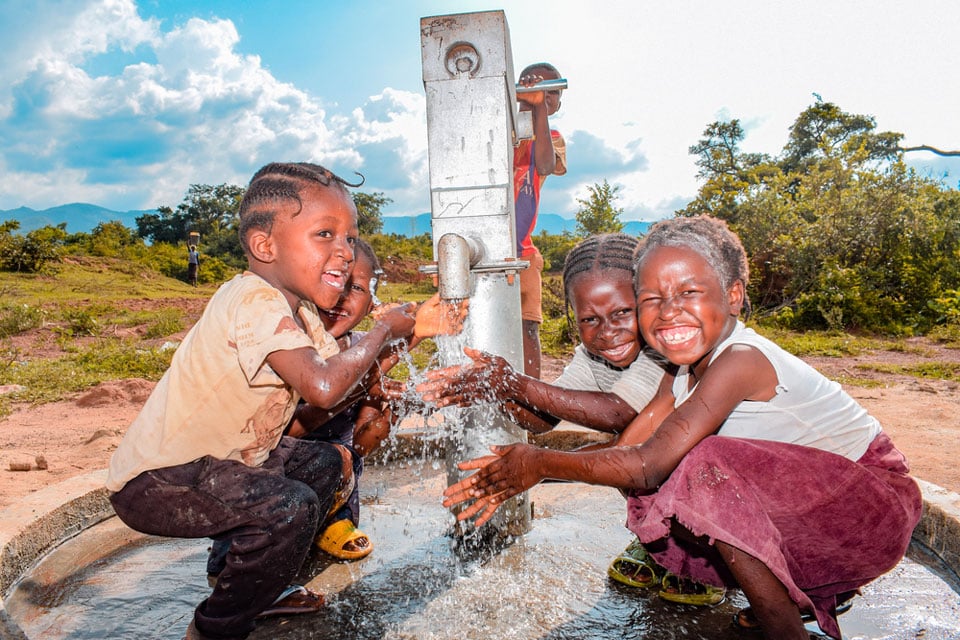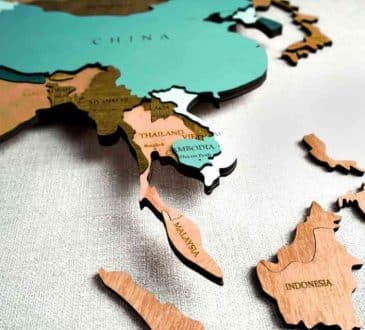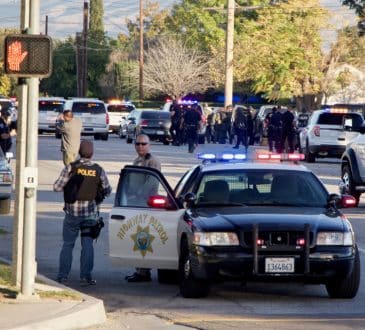Ranked: These countries have the least access to safe drinking water in the world, 2024

Access to safe drinking water is a fundamental human right. The United Nations General Assembly explicitly recognized people’s right to sanitation and water in 2010. Therefore, every person worldwide is entitled to adequate, uninterrupted, and potable water. This essential human need should also be affordable, not expensive, and physically accessible for personal and domestic use.
In many countries today, people encounter problems with safe drinking water. Although this natural resource is available in nearly all parts of the globe, many countries offer expensive water, and its supply is not always sustainable. Additionally, untreated and raw water has resulted in people suffering from gastrointestinal issues like diarrhea, fever, and vomiting.
With the severity of the global problem of potable water access, CEOWORLD magazine’s researchers believe readers should be more informed regarding this critical dilemma. They explained the current status of safe drinking water worldwide and included data on the countries where access to this important natural resource is problematic.
What is considered “safe drinking water”?
Potable or safe drinking water is water that is not harmful to ingest via food preparation or directly drunk in liquid form. It comes from ground sources like aquifers, hyporheic zones, and surfaces like streams, rivers, and glaciers. Moreover, mineral water is obtained in springs. Safe drinking water undergoes sufficient treatment to levels that meet the federal and state quality standards for consumption. Microorganisms, fecal matter, viruses, bacteria, and toxic chemicals are eliminated from the liquid. Furthermore, potable water prevents the transmission of various diseases like polio, typhoid, cholera, diarrhea, and dysentery which are usually caused by microbiologically contaminated drinking water.
Which countries do not have access to potable water?
More than 2 billion people worldwide are from water-stressed countries, according to the World Health Organization data. This trend is anticipated to worsen in some regions due to population growth and climate change. CEOWORLD magazine’s researchers included the following table, which exhibits the countries with insufficient access to safe drinking water:
Countries with Inadequate Potable Water Access: In the table below, Papua New Guinea tops the list, with 60 percent of this country’s population without enough access to microbial contamination-free drinking water. This percentage translates to 5.9 million Papua New Guinea citizens at risk of unsafe drinking water. Seven out of the top ten countries on the list are located in Africa. The residents of these locations do not have access to drinking water from improved sources. Water is also unavailable when needed and is usually contaminated with fecal and priority chemicals.
Is potable water widely available in developed countries?
Developed countries generally provide their people with enough safe drinking water. Their governments facilitate the practice of hygiene, which is an important factor in preventing numerous diseases, including diarrhea and acute respiratory infections. Switzerland is not included in the list of countries with insufficient access to potable water because the latter is not a problem in this developed country. People in Switzerland benefit from consuming the world’s safest drinking water. The Swiss Government also enforces stringent regulations for potable water treatment.
In North America, Canada and the United States are also near the bottom of the list of countries with inadequate access to safe drinking water. Merely 0.8 percent of the United States population and 0.2 percent of Canada’s are inconvenienced by this issue.
Countries with the least access to safe drinking water in the world, 2024
| Rank | Country | Region | GDP (USD million) | Percentage who Lack of Access To Safe Drinking Water |
|---|---|---|---|---|
| 1 | Papua New Guinea | Melanesia | 31,692 | 60% |
| 2 | Equatorial Guinea | Central Africa | 10,041 | 52.10% |
| 3 | Andorra | Southern Europe | 3,692 | 51% |
| 4 | Chad | Central Africa | 12,596 | 49.20% |
| 5 | Mozambique | Eastern Africa | 21,936 | 48.90% |
| 6 | Madagascar | Eastern Africa | 15,763 | 48.50% |
| 7 | DR Congo | Central Africa | 67,512 | 47.60% |
| 8 | Afghanistan | Southern Asia | 14,939 | 44.70% |
| 9 | Sudan | Northern Africa | 25,569 | 44.50% |
| 10 | Tanzania | Eastern Africa | 84,033 | 44.40% |
| 11 | Ethiopia | Eastern Africa | 155,804 | 42.70% |
| 12 | Haiti | Caribbean | 25,986 | 42.30% |
| 13 | Eritrea | Eastern Africa | 2,255 | 42.20% |
| 14 | Mauritania | Western Africa | 10,357 | 42.10% |
| 15 | Niger | Western Africa | 17,073 | 41.80% |
| 16 | Palestine | West Asia | 18,109 | 41.60% |
| 17 | South Sudan | Eastern Africa | 6,267 | 41.30% |
| 18 | Sierra Leone | Western Africa | 3,519 | 37.40% |
| 19 | Togo | Western Africa | 9,111 | 36.90% |
| 20 | Kenya | Eastern Africa | 112,749 | 36.80% |
| 21 | Mongolia | Eastern Asia | 18,782 | 35.60% |
| 22 | Zambia | Eastern Africa | 29,536 | 34.60% |
| 23 | Nigeria | Western Africa | 390,002 | 31.50% |
| 24 | Central African Republic | Central Africa | 2,760 | 31.50% |
| 25 | Tajikistan | Central Asia | 11,816 | 26.20% |
| 26 | Eswatini | Southern Africa | 4,648 | 25.90% |
| 27 | Cambodia | Southeastern Asia | 30,943 | 24.50% |
| 28 | Cameroon | Central Africa | 49,262 | 24.40% |
| 29 | Liberia | Western Africa | 4,347 | 24.40% |
| 30 | Laos | Southeastern Asia | 14,244 | 24.30% |
| 31 | Burundi | Eastern Africa | 3,190 | 24.10% |
| 32 | Guinea | Western Africa | 23,205 | 23.20% |
| 33 | Zimbabwe | Eastern Africa | 32,424 | 23.10% |
| 34 | Mali | Western Africa | 21,309 | 23% |
| 35 | Benin | Western Africa | 19,940 | 22.10% |
| 36 | Senegal | Western Africa | 31,141 | 21.50% |
| 37 | Uganda | Eastern Africa | 52,390 | 21% |
| 38 | Myanmar | Southeastern Asia | 74,861 | 19.40% |
| 39 | Solomon Islands | Melanesia | 1,690 | 19.20% |
| 40 | Lesotho | Southern Africa | 2,373 | 18.20% |
| 41 | Ivory Coast | Caribbean | 79,430 | 18.10% |
| 42 | Burkina Faso | Western Africa | 20,785 | 17.70% |
| 43 | Algeria | Northern Africa | 224,107 | 16.40% |
| 44 | Dominican Republic | Caribbean | 120,629 | 15.30% |
| 45 | Morocco | Northern Africa | 147,343 | 14.60% |
| 46 | Iraq | West Asia | 297,695 | 13.40% |
| 47 | Peru | South America | 264,636 | 13.30% |
| 48 | Bangladesh | Southern Asia | 446,349 | 13.10% |
| 49 | Ecuador | South America | 118,686 | 13.10% |
| 50 | Azerbaijan | West Asia | 77,392 | 13% |
| 51 | Nicaragua | Central America | 17,353 | 13% |
| 52 | Indonesia | Southeastern Asia | 1,417,387 | 12.60% |
| 53 | Moldova | Southeastern Europe (Balkans) | 16,000 | 11.60% |
| 54 | Ghana | Western Africa | 76,628 | 11.30% |
| 55 | Micronesia | Micronesia | 458 | 11% |
| 56 | Bolivia | South America | 46,796 | 10% |
| 57 | Kyrgyzstan | Central Asia | 12,681 | 10% |
| 58 | Djibouti | Eastern Africa | 3,873 | 10% |
| 59 | Syria | West Asia | 11,800 | 9.90% |
| 60 | Malawi | Eastern Africa | 13,176 | 9.80% |
| 61 | Gambia | Western Africa | 2,388 | 9.80% |
| 62 | Namibia | Southern Africa | 12,647 | 9% |
| 63 | Honduras | Central America | 33,992 | 8.80% |
| 64 | Pakistan | Southern Asia | 340,636 | 8.60% |
| 65 | Colombia | South America | 363,835 | 8.60% |
| 66 | Nepal | Southern Asia | 41,339 | 8.40% |
| 67 | Cape Verde | Western Africa | 2,598 | 8.30% |
| 68 | Philippines | Southeastern Asia | 435,675 | 8.20% |
| 69 | Guatemala | Central America | 102,765 | 7.20% |
| 70 | Kazakhstan | Central Asia | 259,292 | 7.10% |
| 71 | Venezuela | South America | 92,210 | 6.90% |
| 72 | South Africa | Southern Africa | 380,906 | 6.80% |
| 73 | Gabon | Central Africa | 19,319 | 6.80% |
| 74 | Oman | West Asia | 108,282 | 6.60% |
| 75 | El Salvador | Central America | 35,339 | 6.20% |
| 76 | Jamaica | Eastern Asia | 18,761 | 6.20% |
| 77 | India | Southern Asia | 3,732,224 | 5.90% |
| 78 | Vanuatu | Melanesia | 1,166 | 5.50% |
| 79 | Panama | Central America | 82,348 | 5.30% |
| 80 | Suriname | South America | 3,539 | 5.20% |
| 81 | Cuba | Caribbean | 107,528 | 5.10% |
| 82 | Albania | Southeastern Europe (Balkans) | 23,032 | 4.90% |
| 83 | Trinidad and Tobago | Caribbean | 27,887 | 4.90% |
| 84 | Saint Vincent and the Grenadines | Caribbean | 1,039 | 4.90% |
| 85 | China | Eastern Asia | 17,700,899 | 4.50% |
| 86 | Sri Lanka | Southern Asia | 88,309 | 4.40% |
| 87 | Fiji | Melanesia | 5,511 | 4.30% |
| 88 | Seychelles | Eastern Africa | 2,085 | 4.30% |
| 89 | Mexico | North America | 1,811,468 | 3.90% |
| 90 | Iran | West Asia | 366,438 | 3.80% |
| 91 | Ukraine | Eastern Europe | 173,413 | 3.80% |
| 92 | Botswana | Southern Africa | 20,756 | 3.80% |
| 93 | Saint Lucia | Caribbean | 2,469 | 3.70% |
| 94 | Lithuania | Northern Europe | 79,427 | 3.40% |
| 95 | Grenada | Caribbean | 1,306 | 3.40% |
| 96 | Russia | Eastern Europe | 1,862,470 | 3.10% |
| 97 | Jordan | West Asia | 50,022 | 3.10% |
| 98 | Saudi Arabia | West Asia | 1,069,437 | 3% |
| 99 | São Tomé and Príncipe | Central Africa | 674 | 2.90% |
| 100 | Vietnam | Southeastern Asia | 433,356 | 2.40% |
| 101 | Tunisia | Northern Africa | 51,271 | 2.30% |
| 102 | Tuvalu | Polynesia | 63 | 2.30% |
| 103 | Thailand | Southeastern Asia | 512,193 | 2.20% |
| 104 | Costa Rica | Central America | 85,590 | 2.20% |
| 105 | Ireland | Western Europe | 589,569 | 2.10% |
| 106 | Antigua and Barbuda | Caribbean | 1,949 | 2.10% |
| 107 | Paraguay | South America | 44,142 | 2% |
| 108 | Brazil | South America | 2,126,809 | 1.90% |
| 109 | Malaysia | Southeastern Asia | 430,895 | 1.80% |
| 110 | Poland | Central Europe | 842,172 | 1.70% |
| 111 | Guyana | South America | 16,329 | 1.70% |
| 112 | Saint Kitts and Nevis | Caribbean | 1,069 | 1.70% |
| 113 | Bahamas | Caribbean | 13,876 | 1.60% |
| 114 | Chile | South America | 344,400 | 1% |
| 115 | Lebanon | West Asia | 37,945 | 1% |
| 116 | Kuwait | West Asia | 159,687 | 1% |
| 117 | Samoa | Polynesia | 939 | 1% |
| 118 | Argentina | South America | 621,833 | 0.90% |
| 119 | United States | North America | 26,949,643 | 0.80% |
| 120 | Serbia | Southeastern Europe (Balkans) | 75,015 | 0.80% |
| 121 | Latvia | Northern Europe | 46,668 | 0.70% |
| 122 | Egypt | Northern Africa | 398,397 | 0.60% |
| 123 | Bulgaria | Southeastern Europe (Balkans) | 103,099 | 0.60% |
| 124 | North Macedonia | Southeastern Europe (Balkans) | 15,801 | 0.60% |
| 125 | Slovenia | Southeastern Europe (Balkans) | 68,394 | 0.50% |
| 126 | Belize | Central America | 3,218 | 0.50% |
| 127 | United Arab Emirates | West Asia | 509,179 | 0.40% |
| 128 | Croatia | Southeastern Europe (Balkans) | 80,185 | 0.40% |
| 129 | Estonia | Northern Europe | 41,799 | 0.40% |
| 130 | Tonga | Polynesia | 547 | 0.40% |
| 131 | North Korea | Eastern Asia | 48,350 | 0.30% |
| 132 | Belarus | Eastern Europe | 68,864 | 0.30% |
| 133 | Uruguay | South America | 76,244 | 0.30% |
| 134 | Montenegro | Southeastern Europe (Balkans) | 7,058 | 0.30% |
| 135 | Barbados | Caribbean | 6,220 | 0.30% |
| 136 | Canada | North America | 2,117,805 | 0.20% |
| 137 | Bosnia and Herzegovina | Southeastern Europe (Balkans) | 26,945 | 0.10% |
| 138 | Mauritius | Eastern Africa | 14,819 | 0.10% |
What is the future of safe drinking water worldwide?
Readily available and safe water is significant for public health. People can enjoy quality living if they have access to clean water for drinking, food production, and recreation. Countries can also ascend economically and reduce poverty incidences if they have better sanitation and water supply and improved water resource management.
Based on WHO data, 6 billion people – or 73 percent of the world’s population – utilized safely managed potable water services in 2022. The contaminant-free drinking water is based on a facility and available when the people need it. CEOWORLD magazine’s researchers view that this trend of more countries worldwide achieving better access to potable water must carry on in the coming years. This endeavor is possible with the partnership between all stakeholders: governments, non-governmental organizations, private companies, and citizens. Together they can eradicate the unequal access to affordable and safe drinking water.
Have you read?
20 US Cities that Offer the Best Value for your Social Security Income.
Revealed: These are the 25 Modern Inventions we really Don’t Use Anymore.
Richest Billionaire Investors In The World, 2024.
Ranked: Canada’s top 100 highest-paid CEOs, 2024.
Revealed: These Are The Richest People in Africa, 2024.
Add CEOWORLD magazine to your Google News feed.
Follow CEOWORLD magazine headlines on: Google News, LinkedIn, Twitter, and Facebook.
Copyright 2024 The CEOWORLD magazine. All rights reserved. This material (and any extract from it) must not be copied, redistributed or placed on any website, without CEOWORLD magazine' prior written consent. For media queries, please contact: info@ceoworld.biz









